Our American Journey: Stories from King/Drew Magnet High School Students
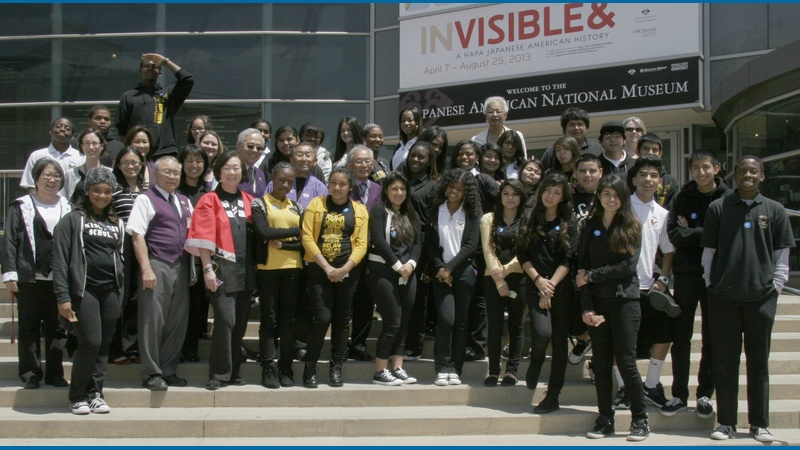
Our American Journey: Stories from King/Drew Magnet High School Students
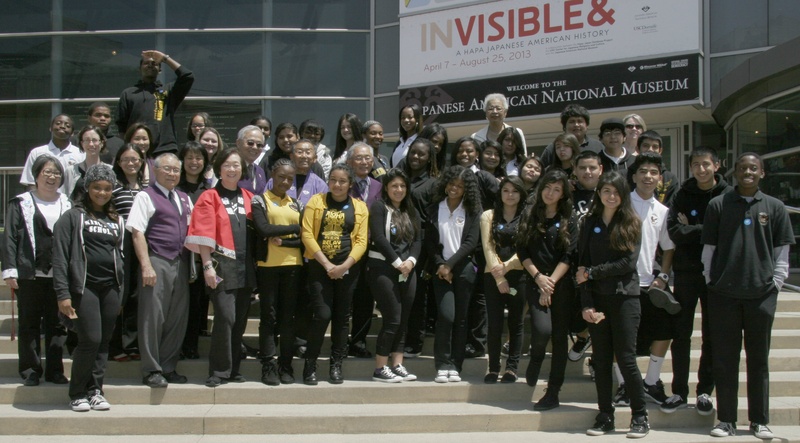
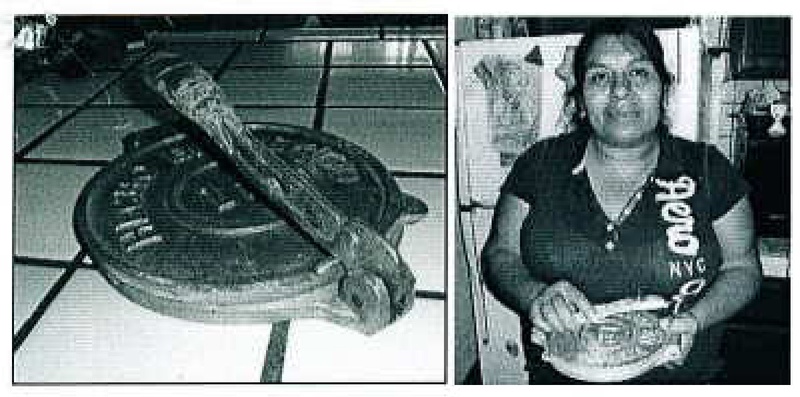
The Advances (The Tortillero)
By Stephanie S.
A few years ago my mom left her birth place so she can migrate to a better place where she can find a job to help out other people. Her name is Marina G. and she was born on December 27 in Puebla, México. She lived in a very poor town where there wasn’t that many jobs for the people who lived there. So later she decided to move to Los Angeles with one of her older cousins. He then would be able to help out my mom here and it would be easier for her to be able to look for a job. She only carried a few things which included only the necessary things and a “tortillero”.
The tortillero maker also known as the “tortillero” is a very much used in México as a tradition. My mom brought her tortillero a long way because she thought it might make her miss her home town less and also a better way for her to remember the way that the tortillas were made over there. The tortillero means a lot to my mom because it would help her to remember her life as a child and so she can be able to keep these memories with her.
She thinks that maybe someday she’ll be able to pass it down to one of her kids since it’s a memory that she brought from her home town. Most people like to have kept safe objects which can represent something to them or it’s just like a memory that they can keep with them throughout their life. To her the tortillero also represents her culture and where she comes from. Since the tortillero is very common in México it can help to tell other people where she comes from and what some of the traditions that she might use. Some of these tortillero can be made out of wood, metal, and even rock. This tool can be helpful to make tortillas.
My mom said that her tortillero is really helpful and significant to her because she is able to make something that can remind her of the times of when she was in México. In her childhood this played an important role in her life. She always remembers that her mom would use the tortillero to make the tortillas since she was living in a very poor place. When she was living over there they didn’t have very much and the majority of the time that would be something they would always have. This type of situation was very much common in her town. So since then that’s why over there in México the tortillero was a helpful tool that had helped them survive through the hunger they had.
Years ago this item was very important to most people in the Mexican culture because it was useful tool so they can always bring some of their old traditions that they used to have to their new place they migrated to. This is also one of the ways that my mom used this and since there wasn’t that much of things that they could bring with them. So now this tortillero is very important to my mom’s culture because most people don’t really keep their traditions going but this helps to keep the Mexican tradition within their family
Today, in the human society there are automatic tortilla makers. There has been a great change in things because of the technology that has advanced. These machines make a very huge difference because the tortillas most people are already used to the old way of making the tortillas but since today the tradition is still kept and it helps them to show their culture and place that they are coming from. So this can help for other people so they can know about other people and how they also used to live in México. Most people can start to get an idea of they were living over there and so now my mom has a better life but she now has something that reminds her of her old town.
--
Left: Stephanie's mother brought a tortillero with her from Mexico to help her remember life as a child
Right: Stephanie's mother with her tortillero
This is a part of the "Our American Journey" Project between the King/Drew Magnet High School of Medicine and Science, the Japanese American National Museum, and the Smithsonian Institution. Students, inspired by video shorts showcasing Japanese American National Museum volunteers sharing their own family stories, wrote narratives based on interviews with their families. To read the student essays, click the below link "Our American Journey: Stories from King/Drew Magnet High School Students."
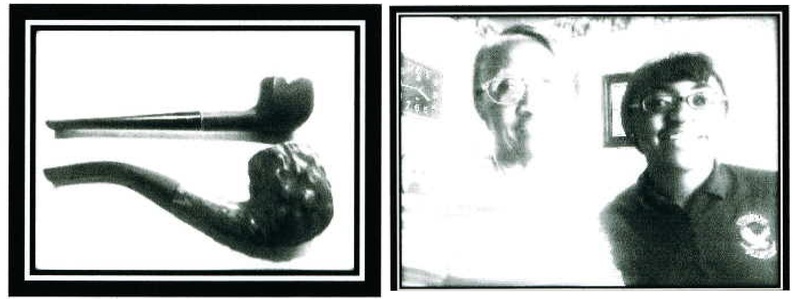
Mrs. P's Precious Keepsakes (Eryka's Grandmother)
By Eryka S.
In 1930, my grandmother Willie Bell P. was born in Muldoon, Texas. She was raised by her mother Artessa A. and father Crockett A. As a child she went to school and completed elementary, middle and high school before getting married at the age of 21. Shortly after the newlyweds moved to California where they would start a new life in pursuit of greater opportunities. Unfortunately, the couple had to leave their wedding gifts because they didn’t have enough luggages or a trailer for transport. They were then stored at her Aunt Verna and Uncle Joe’s house. My grandparents mostly brought their personal belongings with them and things they really cherished to California. When they arrived in California they experienced new and interesting things. They realized how great, sunny, and cool California is, which was much more desirable than the usual hot and humid weather they were accustomed to in Texas. The environment of Texas and California was also different. Texas life was a rural setting; their family had a nice farm that consisted of chickens, hogs, cows, and horses. In California they had stray cats and dogs roaming around their property. Before buying a house, they lived in a tent for one and a half years before finding their ideal house to reside in. They then had their first child. By purchasing a house they truly made California their home. They had a total of five kids; two boys and three girls. Along the way Mrs. P. began to cherish her most prized possessions which helped her settle in this unknown place she had ventured to. These things began to really help her life and give her kids a chance to learn more about and appreciate her family through her precious artifacts she took with her from Texas.
To begin, I discovered that Mrs. P. really treasured her grandfather’s pipes. According to my interview, her grandfather grew his own tobacco. My grandmother stayed with her grandparents throughout high school until she left the house. During that time he would smoke the piped while telling stories to kids, which he loved doing. Because of her grandfather’s actions, it made a significant impact on her because it became important when she would reminisce on memories of Texas. During the interview, I asked how old was the pipe and how long did she have it. I was pleased to find out that the pipe was over 100 years old and she had it for 48 years. I also discovered that the pipe helped her to visualize her grandfather smoking and telling stories to children. Truly, the pipe has been very meaningful to my grandmother and I’m pleased that she would pass this great piece of our family history to me.
Next, I discussed with my grandmother concerning her mother’s quilts. As I questioned her I discovered my great grandmother gave my grandmother the quilts in 1951. She reported to me that she had kept the quilts for over 20 years. When I asked about its significance to her, she responded by saying that the quilts are precious memories of her mom. According to my grandmother, her mother was a skilled woman. She made the quilts by hand and pieced the quilt with speed and accuracy. She truly was a hardworking and gifted woman . The quilts added to my grandmother’s happiness. The quilts helped her to keep the entire family warm. I appreciate her mother’s actions and the love she showed toward her children. I’m very happy I have these quilts to use because my family has been using them generation after generation so of course I have one. It was last used in December of 2012 and we forward to using these hand-crafted quilts for many more!
Lastly, I interviewed Mrs. P. about her kerosene lamps. I found out that she had the lamps since 1951. She also replied that the lamps were 60 years old. When I asked her about the significance of the lamps she stated that the lamps were important due to the fact that it was the only source of light used living in the country since there was no electricity. Without the lamps her lie would have been uncomfortable being me the dark. These lamps meant a lot to my grandmother because they were needed greatly and they brought back memories about lie in Texas. The lamps were last used when a blackout occurred in California. I’m very appreciative that my grandmother will pass down the lamps to me and my siblings. Truly, these lamps are a great piece of my family history and I’m very proud to have these lamps apart of it.
In conclusion, these great artifacts constructed a very important and memorable history to my grandmother and my family. Through these artifacts my family can learn about my grandmother’s history and realize the significance of them. As a result, I’m glad that these wonderful items will pass on generation to remain in our family and the next will appreciate the importance of our history. In addition, I connected my grandma’s story to the stories I investigated at the Japanese American Museum. It came to my knowledge that everyone has a story whether it’s through pictures or quilts; they all serve a purpose and are treasure in our lives. In closing, when life brings you challenges or whether it brings you some where new, it is important that we cherish our memories through artifacts that we can hold on to for a life time.
--
Left: Eryka's grandmother has kept her grandfather's pipe for 48 years
Right: Eryka with her grandmother, Mrs. P.
This is a part of the "Our American Journey" Project between the King/Drew Magnet High School of Medicine and Science, the Japanese American National Museum, and the Smithsonian Institution. Students, inspired by video shorts showcasing Japanese American National Museum volunteers sharing their own family stories, wrote narratives based on interviews with their families. To read the student essays, click the below link "Our American Journey: Stories from King/Drew Magnet High School Students."
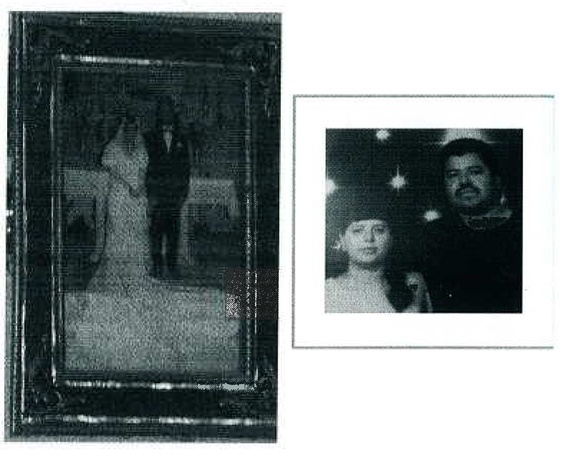
Coming to the United States (Carmen's Parents)
By Carmen J.
The person I interviewed was my mom, Maria J. She comes from San Nicolas, Miahuatlan, Oaxaca. Juliana and Baltazar brought her, Maria Maya into this word on July 22nd, 1974. As she grew up, she never thought of coming to the United States, but as time passes, anything can happen. She grew up living with her grandmother in order to study and work at the same time. She worked at her aunt’s store that was near her school and that is how she met her husband, my dad, Felix J.
October 9th, 1993 marked their lives, they pledged to love and care for one another. June 11th, 1994, a new baby came into this world, my sister, Yadira J. My dad had already gone to the United States before, and asked my mom id she wanted to come over to the United States. After thinking it for a while my mom said yes, because she wanted the family to be united. It was November 1995, at the age of 21 she arrived at Los Angeles. Without having time to get anything ready, she could only bring a few things that were necessary to survive during her journey from San Nicolas to the United States. She brought my sister, water, powdered milk, pampers and a picture of her and my dad on their wedding day.
Once she arrived to Los Angeles, my father, aunt and grandpa were waiting for her in Tijuana. She was surprised to see so many cars and police officers at same time. In San Nicolas, all you saw were stores, people walking, and moto-taxis. Everyone knew everyone and everything; it was a small pueblo but wide open. There are local parks all around Los Angeles, over at her homeland there was only one, and it was known as “la cancha”. Swimming pools are located in practically every park, at San Nicolas, there aren’t pools, and there are “tanques”. Tanques are similar to swimming pools, but bigger and opened the entire year not just in summer. You have more freedom over at San Nicolas. It’s a place where you can just walk around; kick it with friends like if it was a perfect place. Parties every weekday or weekend and the guys are not shy to ask you out to dance. Teenagers start smoking and drinking at a young age, but not all teenage guys are the same. Some guys are so outgoing that asks a girl to get married at the age of 15 or so.
Even though Maria was hundredths of miles away from her family, she still kept in touch with them. She didn’t let traditions die. She still calls her loved ones and always has them in her heart. She recently has visited them at San Nicolas, Miahuatlan with her whole family, her two daughters, son, and husband. When they are in need she sends them money to help them out with what she can. She knows that she can count on them with anything as well, that is why they are family.
That picture taken on October 9th, 1993 was really special to both of them but had a higher significance to her. That picture proves their love, their vowel of being together for the rest of their lives. It represents that even in the hardest situations someone is going to be there for you no matter what. “Two souls but with a single thought two hearts that beat as one.” – John Keats That quote proves that anything can be united as one. Even when there are problems that are tough, anything is possible. That picture represents sacrifices, hard work, dedication, accomplishment and showing that no one should ever give up on their dreams because nothing is impossible, even the word itself says I’M POSSIBLE.
Coming to the United States, never crossed Maria’s mind. She thought that this process was going to take long, but in a matter of hours she arrived at Tijuana, with her baby, my sister, Yadira. Today, May 6th, 2013, it is seventeen years that she has been here at Los Angeles, and she doesn’t regret it. She came to keep her new family united even though she knew she was going to miss her biological family. Even though they are miles apart, the memories live in her heart.
--
Left : Carmen's parents on their wedding day in 1993
This is a part of the "Our American Journey" Project between the King/Drew Magnet High School of Medicine and Science, the Japanese American National Museum, and the Smithsonian Institution. Students, inspired by video shorts showcasing Japanese American National Museum volunteers sharing their own family stories, wrote narratives based on interviews with their families. To read the student essays, click the below link "Our American Journey: Stories from King/Drew Magnet High School Students."
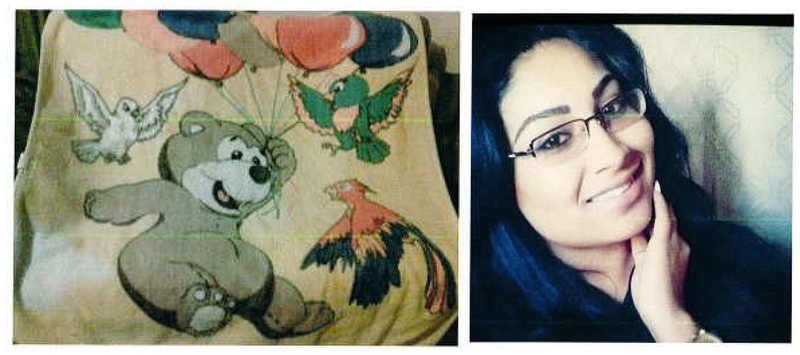
The Blanket Journey (Getsemany's Blanket)
By Rosa U.
The family member i decided to interview was my sister Getsemany S. She was born March 12,1994 in Durango,Mexico. She came to Los Angeles when she was five years old. She is now nineteen years old and is currently attending college. She came to Los Angeles with her grandma to come live with her mom.
The artifact she brought with her when she migrated here was a blanket. The blanket is yellow it has a teddybear holding on to balloons and birds around the bear. She has had the cover for nineteen years now. Her godfather Gustabo gave it to her mom as a baby shower gift. This blanket is special to her because her godfather gave it to her mom as a baby shower gift and it was the first blanket they used to wrap her with when she was just a new born. The cover is also special to her because it reminds her of her childhood and when she use to have picnics with her blanket.Another reason it is special to her is because she remembers that her dad use to tug her into sleep with that cover. She does not know exactly where they made it but she knows it was made in Mexico. She plans to keep the blanket and pass it down to her kids.
When she came here she was very exited because she was going to see her mom after five months of not seeing her. She was also sad because she knew her mom had came to America because she was detected with cancer and was going to be able to get better treatment here. When she came here she expected it to be very beautiful and to have a better life here but it didn’t take them long to realize that life here was going to be hard and was going to take time to accomplish there “American dream.” Something that was difficult for them was having to learn English here since almost everyone they went people did not know spanish. This blanket has a lot of significance to our family because it reminds us where we are from and the family my mom and sister left when they decided to come here. It also represents hard times for my family and that the “American dream” is possible!
--
Left : The yellow blanket brought by Rosa's sister, Getsemany, when she came to the United States
This is a part of the "Our American Journey" Project between the King/Drew Magnet High School of Medicine and Science, the Japanese American National Museum, and the Smithsonian Institution. Students, inspired by video shorts showcasing Japanese American National Museum volunteers sharing their own family stories, wrote narratives based on interviews with their families. To read the student essays, click the below link "Our American Journey: Stories from King/Drew Magnet High School Students."
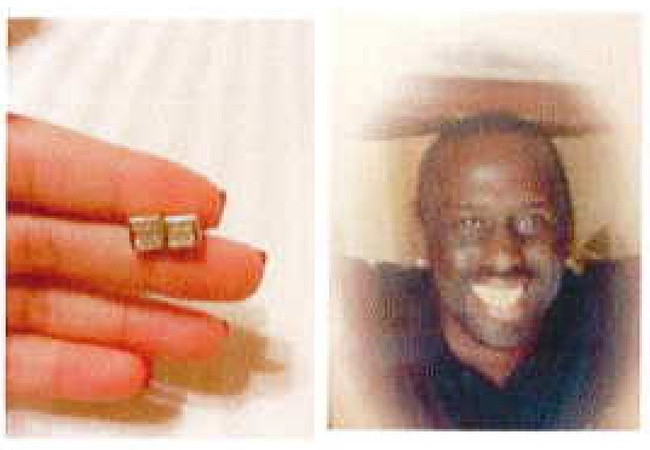
Always Remembered (Rikki's Earrings)
By Rikki T.
On May 5, 2006 my father was murdered in Kansas City Missouri. He owned a lot of jewelry and personal belongings. One thing that he wore faithfully everyday was this ring. The ring had over 50 diamonds in it. Once my dad was put to rest my mom melted the ring down. She made three rings and a pair of earrings. Two of the rings were for my sister and I. Both of our rings had 7 diamonds in a row. The other ring and earrings originally belonged to her. The ring had about 30 diamonds in it and each earring had 4.
The earrings are very special to my mother, because the earrings, rings, and some lost memories in photos are all we have left of him.
The earrings are gold with VVS diamonds. Each earring has four diamonds in it. The earrings are one square centimeter. Each earrings has a gold screwback.
The earrings were given to me a couple years ago by my mom. One day I was going through our jewelry and asked could I have the earrings, because she never wore them. Of course she told me yes, and for almost a year straight she would question me about where they were when I didn’t have them on. She would always say “don’t lose my earrings you know how much they mean to me”. One time she even took them from me, because she found them on the floor by my nightstand.
So, to this day I still wear the earrings along with some other diamond earrings she bought me. I still wear the earrings, because its really all I have left of him that I can wear everyday.
--
Left: The earrings Rikki's mother gave to her
Right: Rikki's father, whose ring was melted down to create the earrings
This is a part of the "Our American Journey" Project between the King/Drew Magnet High School of Medicine and Science, the Japanese American National Museum, and the Smithsonian Institution. Students, inspired by video shorts showcasing Japanese American National Museum volunteers sharing their own family stories, wrote narratives based on interviews with their families. To read the student essays, click the below link "Our American Journey: Stories from King/Drew Magnet High School Students."
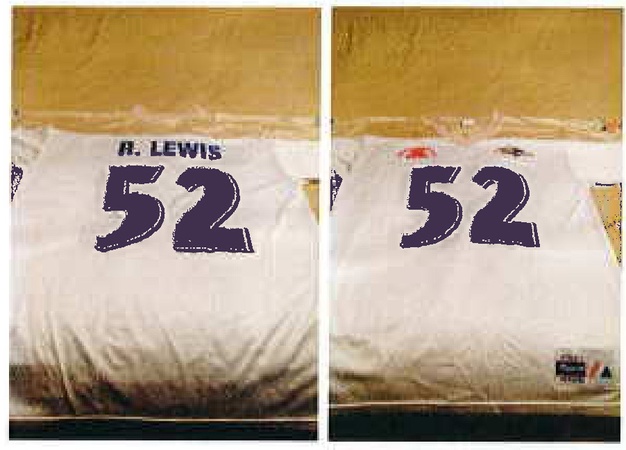
Immigration (The Baltimore Ravens' Jersey)
By Brandon S.
Do you have a favorite sport team that you and your father watch together? The main idea of this is that people may leave but there belongings are all ways here and here to stay. I asked what holds special to them. She replied a Baltimore raven jersey. I’m thinking to my self saying why a ravens jersey when there are millions all over the country. I continued and I asked when you received it she said in 2004 when her father had passed away, that caught my attention.
She received this jersey before he had passed away. The meaning of it is how they both enjoy the sport, football. Since I was asking these questions I was guessing that he was very big ravens football fan since it was a super bowl jersey when the ravens made in 2000-2001 season playoffs and also get this the Baltimore raven used to be the Cleveland browns before they became there own team. Then I asked her what does it reminds her. She replied it reminds her of her of her father and his passion for the game.
The next question was an interesting one; does she still maintain the item? She said “yes I still have it.” I asked her why she still has it because some people don’t want to keep stuff of someone that they were close to. She still keeps it because it was a special bond with her and her farther. Then I asked does anyone in the family have an item just like it. She said no just her has it in the family.
Then this is where things get interesting. She also mentioned that it wasn’t the only thing reminds her of him, like her I only remember him from pictures because he is my grandfather. I asked was it passed on from generation to generation (from his father to his him); she answered no just from him to her, parent to child. The other special thing about this item is when the ravens won two super bowls. Last she said that there are no other items that remind of her father besides the pictures, jersey, and gravesite. That is why the jersey is special to her. The American identity of this is that is American football everyone from all races to watch this sport.
In conclusion this it may have little to nothing to my grandfather but if you think about it he past away so he is gone that is why I choose this story. Which brings me back to the main point, “people may leave but there belongings are here to stay. That is my essay and the thing that my mother holds to remind her of her father
--
Brandon's mother uses this Baltimore Ravens' jersey to remember her father.
This is a part of the "Our American Journey" Project between the King/Drew Magnet High School of Medicine and Science, the Japanese American National Museum, and the Smithsonian Institution. Students, inspired by video shorts showcasing Japanese American National Museum volunteers sharing their own family stories, wrote narratives based on interviews with their families. To read the student essays, click the below link "Our American Journey: Stories from King/Drew Magnet High School Students."
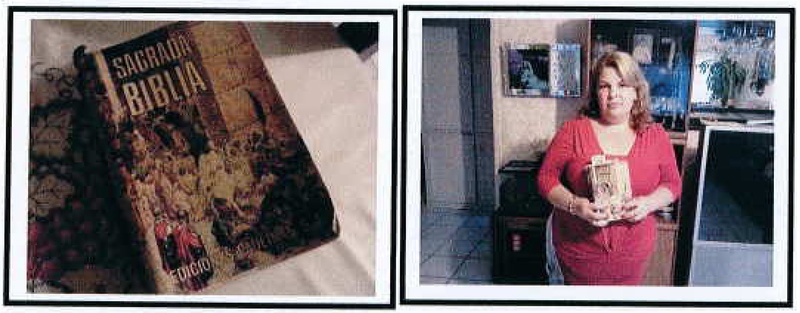
Mothers Journey to America (The Bible)
By Kevin R.
Whenever we think about moving to another country we tend to think about not seeing our native home or if we will ever see our family who stayed there ever again. My mother who emigrated from Mexico went through that emotional rollercoaster at the age of 18. She brought along many items to remember her home but her most important is an old bible with brittle paper that she received at the age of 11. She’s a wonderful woman and went through all the trouble to get here for a purpose, but I won’t tell you, not just yet.
My mother’s story of traveling to the U.S. Went something like this, she decided to move to America at the age of 18 and began her farewells to her family. She also agreed to meet her boyfriend, who is now my father, in the U.S and they went through different routes to get to America. She went over to a program called Bisa to receive a passport and now needed to get to an airport. One or two weeks later she arrived at Guadalajara by bus and then took a car ride to Tijuana. Finally they arrived at an airport and reunited with her lover and settled in Los Angeles.
Throughout the time she went through all that she kept one item close to her and actually helped her when she was in doubt. It was the Bible and at the time it wasn’t as old, she kept it new, despite the fact that she got it at age 11. She received it at a religious community college and has kept it close to her when she went through doubt or hard times. As she told me it was like having a friend there comforting and told stories that she loved to read. As time passes the book grows older and is now much more brittle. It’s found in the living room open and to this day gathers dust but lives long.
Now if you were wondering what the purpose of her leaving her home and family for a land she didn’t had a clue of, it was because she did it for us. She did it for the children that she had such as my brothers, sisters, and me so we can have a better opportunity at life. She risked it all so we can have a better lifestyle, better opportunities, and better education. This obviously was heartwarming to me and made me happy but I’d never guess she came here for us.
Migrating from your home land to a new country can be an emotional challenge such as my mother has faced. My mother had a purpose on migrating to the U.S and one of her reasons was to give her children a better opportunity at life than she could have had. While migrating to the U.S. she kept her bible which was received during her childhood close to her and read it whenever she was in doubt. Her experience in general was easy and simple but throughout her time traveling she felt homesick already and knew that she would miss her native country.
--
Left: Kevin's mother brought this Bible to comfort her when she came to the United States from Mexico
Right: Kevin's mother with her Bible
This is a part of the "Our American Journey" Project between the King/Drew Magnet High School of Medicine and Science, the Japanese American National Museum, and the Smithsonian Institution. Students, inspired by video shorts showcasing Japanese American National Museum volunteers sharing their own family stories, wrote narratives based on interviews with their families. To read the student essays, click the below link "Our American Journey: Stories from King/Drew Magnet High School Students."
In November 2012, the Smithsonian Institution invited the Japanese American National Museum (JANM) to participate in a project called, “Our American Journey.” JANM worked with ninth graders from Los Angeles’ King/Drew Magnet High School of Medicine and Science to investigate artifacts and family stories related to immigration and migration. Under the guidance of Ms. Agena, their amazing English teacher, they found some inspiration in the video shorts showcasing Japanese American National Museum volunteers sharing their own family stories. (Here is one of the videos that they saw. And you can see all of the volunteer shorts in this Discover Nikkei album .)
These students visited JANM to hone their object analysis skills within JANM’s Common Ground: The Heart of Community on-going exhibition. Everybody at JANM and the Smithsonian Institution really enjoyed working with these ninth graders; we learned so much from Ms. Agena and her students.
This album is just a sampling of the narratives that the students wrote. It hints at the diversity of Los Angeles, and the diversity of our nation. We hope that this album will inspire you to learn more about your own family’s stories of immigration and migration.
===
The students’ essays were created as part of a pilot project between King/Drew Magnet High School of Medicine and Science, the Japanese American National Museum, and the Smithsonian Institution’s Our American Journey Project. OAJ is a multi-year project that will examine international and internal migration centered on what we understand today to be the United States.
Photo by Gary Ono
The new Nikkei Album!
We’re excited to share our redesigned Nikkei Album. It’s a work-in-progress, so please have patience as we add more features and functionality. It will be an exciting tool for our community to easily share photos, videos, and text! Learn MoreNew Site Design
See exciting new changes to Discover Nikkei. Find out what’s new and what’s coming soon! Learn More
Discover Nikkei Updates
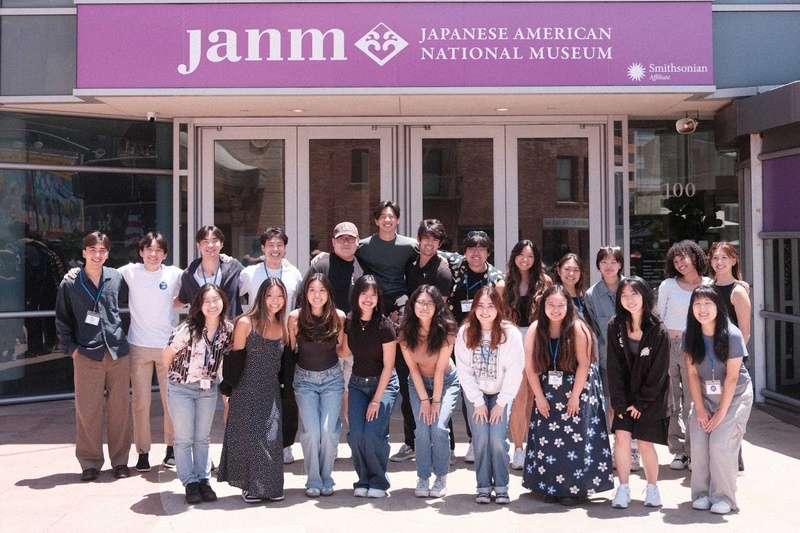
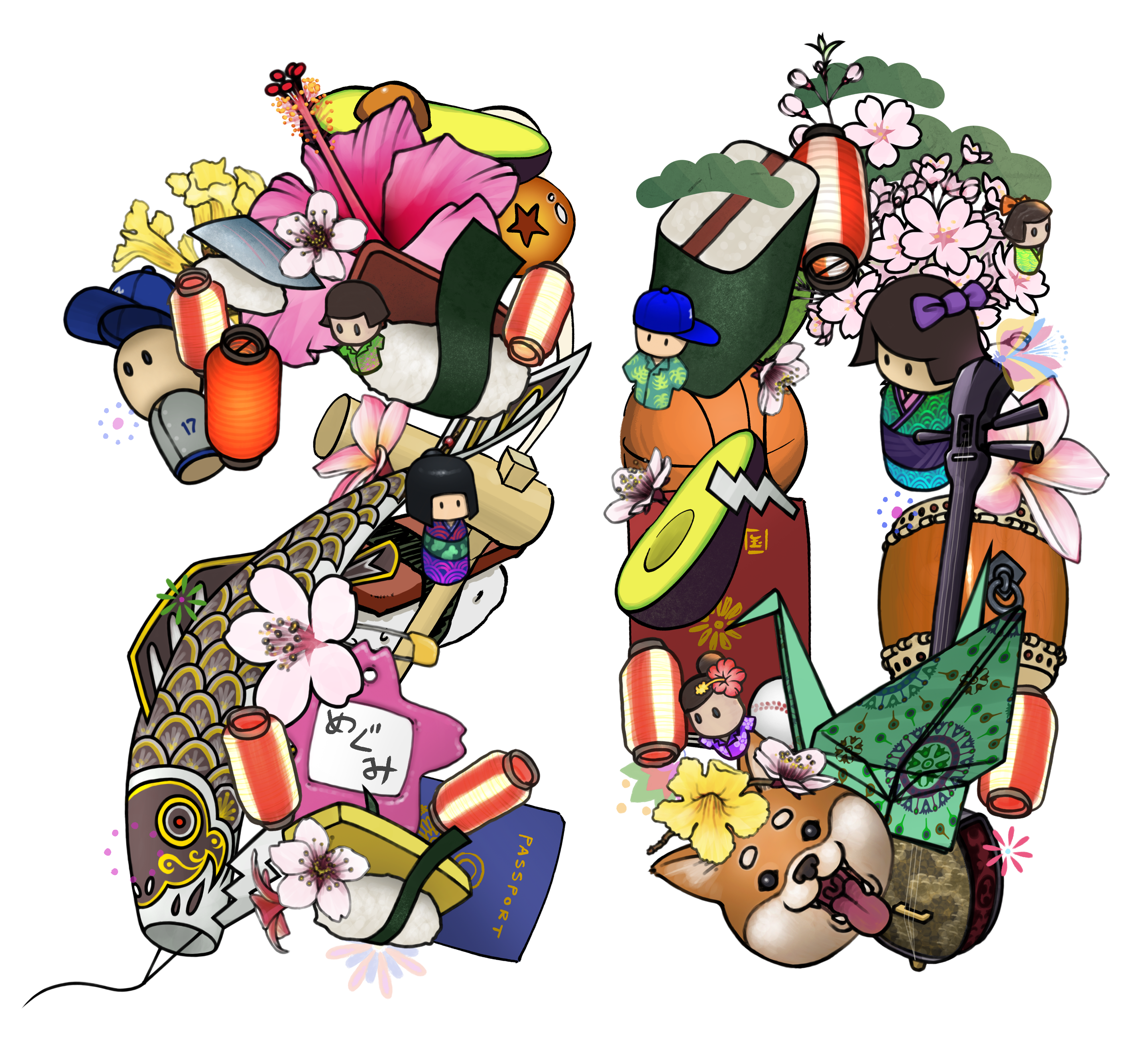

See exciting new changes to Discover Nikkei. Find out what’s new and what’s coming soon!


